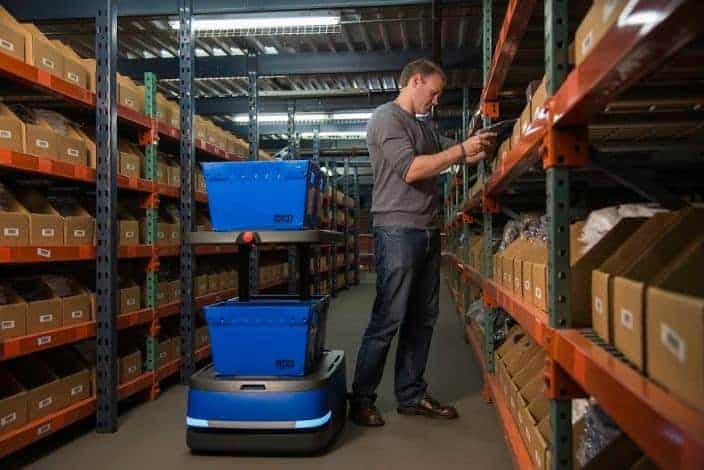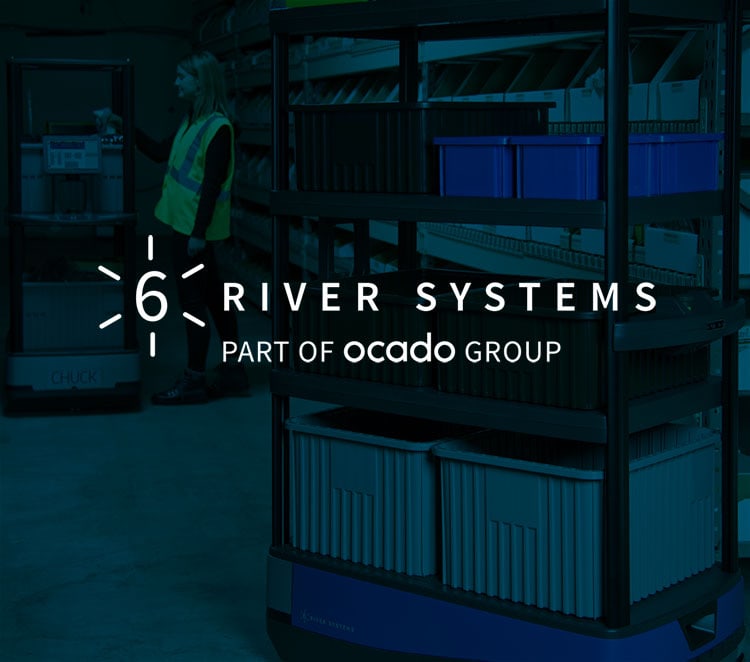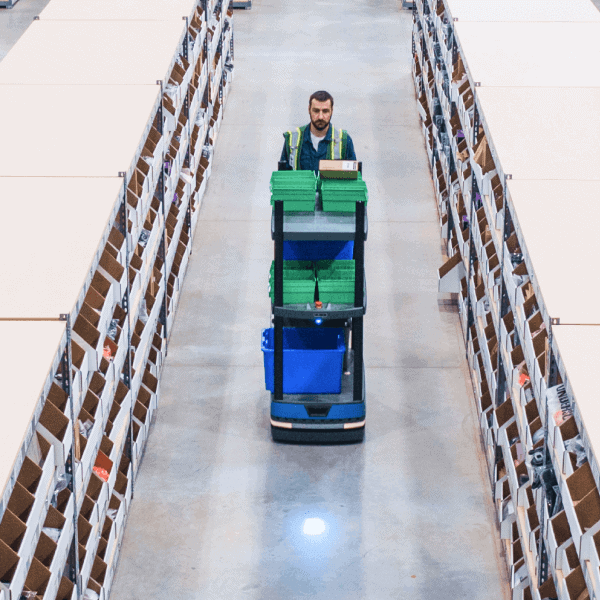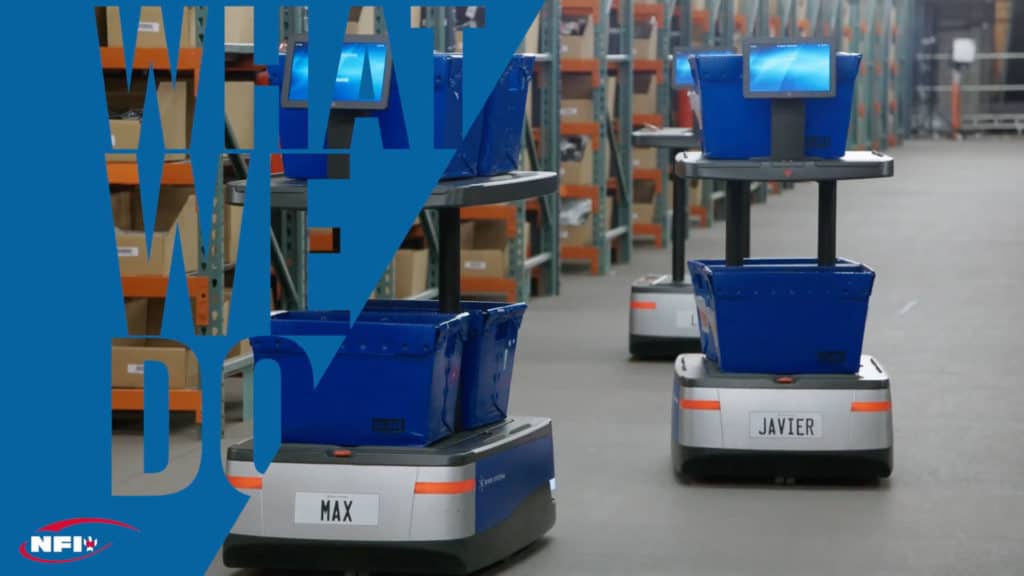According to Staff Management‘s 2017 Fulfillment Trends, the technology used to streamline order fulfillment in operations around the world is growing at a staggering 100% annually. Eighty percent (80%) of consumers report that they want same-day shipping, while 61% say they prefer shipping within one to three hours. For retailers, particularly those focusing on providing an omnichannel experience, consumer demand is driving rapid adoption of the latest order fulfillment technologies.
The savviest retailers are those that embrace the processes, tools and technologies that speed up and automate fulfillment. While this may mean saying ‘goodbye’ to certain tried and true practices, there are also scenarios in which the basic structure of these standbys can be augmented for better efficiency.
Take the process of pick to cart, for instance. It’s a fulfillment strategy that’s been used for years, but it’s also a practice that has undergone recent, technology-driven improvements. Let’s take a closer look at pick to cart.
Definition of pick to cart

Simply put, pick to cart is an order fulfillment model in which associates walk throughout a warehouse, picking items off the shelves and placing them on a rolling batch picking cart for packing and delivery. In its most nascent form, pick to cart is a manual process (e.g., a baker’s rack of inventory tracked using printed pages and a clipboard). Today’s busiest warehouses have chosen to supplement this picking method with some form of automation, like pick to light and pick to voice technologies.
When using the traditional pick to cart technique, warehouse operators can expect to pay anywhere from $100 to $20,000 per user. It typically requires about three to four weeks for training and implementation and offers performance of about 50 to 100 uph. Traditional carts require three to four feet of aisle width.
Pick to cart has served as the cornerstone of order picking techniques for decades for good reason — it is the most flexible way of doing fulfillment. It pairs well with all picking methodologies and has the lowest capital costs, but the highest operating costs.
How pick to cart works
The pick to cart process, a warehouse picker mans a cart with multiple containers. The operator moves the cart to the next forward pick location, picking multiples of SKUs for multiple orders. Pick to cart can also be combined with packing, known as pick and pack to cart, in which items are placed directly from the pick location into the appropriate shipping box. This solution combines pick, pack and sort into a single process – eliminating the time-consuming consolidation step required in the typical batch picking process.
Benefits of pick to cart
Pick to cart is ideal for slow- and medium-moving items and low- to medium-volume orders. In addition to eliminating time-consuming fulfillment steps, pick to cart allows batches to be created based on customized criteria, such as priority, order size or order cut-off time to optimize productivity. Because associates can pick multiple orders at the same time as they work their way throughout the warehouse, pick to cart minimizes walking distance — an element that has a big impact on fulfillment times.
Challenges of pick to cart
Implementing a pick to cart system can also come with a few challenges. For one, it can be difficult to organize an optimized route. In large distribution centers, the heightened volume of items being picked at one time can generate a lot of traffic and congestion in aisles. Additionally, orders can be subject to operator error if pickers place items in the wrong container.
Is pick to cart is right for your business?
Before adopting the pick to cart concept in your distribution center, there are a few important considerations to weigh:
- Characteristics of items in your distribution center — Large, bulky items will require larger containers — and sometimes, more carts. Plus, heavy items can make it difficult for associates to move manual carts.
- Quantity of SKUs and order profiles — A larger volume of SKUs increases the complexity of organizing orders on a batch picking cart and also typically means more time-consuming picking routes. Large numbers of orders with small numbers of SKUs and large numbers of SKUs with a small rate of picks are both well-suited for pick to cart.
- Software and technology investments — Large operations may require substantial investments in hardware and software to implement pick to cart. Complex order profiles may benefit from the addition of voice picking or pick to light technologies to improve accuracy and efficiency.
How 6 River Systems improves the pick to cart concept

We’ve already established that the pick to cart concept, even its most rudimentary form, can be beneficial to a range of warehouses and distribution centers, but it’s an especially powerful process when supported by artificial intelligence. 6 River Systems’ collaborative mobile robot, Chuck, solves the challenges of pick to cart by leveraging AI to optimize zones and picking routes and maximize picking efficiency while reducing foot traffic, eliminating the long walk.
Using a directed workflow, Chuck guides associates to the appropriate work area, leading them through tasks until all work is done. Chuck’s cloud-based algorithms manage work in real-time to reduce steps between tasks, while eliminating human error by guiding associates, step-by-step, through the picking processes. The best part? No changes to your physical warehouse infrastructure are required. With Chuck, you can go live in weeks rather than months or years — meaning faster ROI. 6 River Systems offers a flexible solution, enabling warehouse operators to rent additional capacity during peak seasons and return the units when demand returns to normal, reducing your capital investment.



